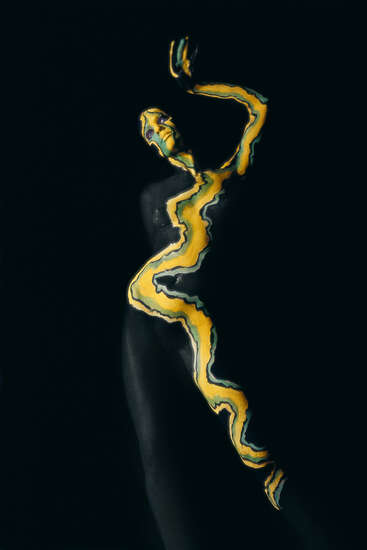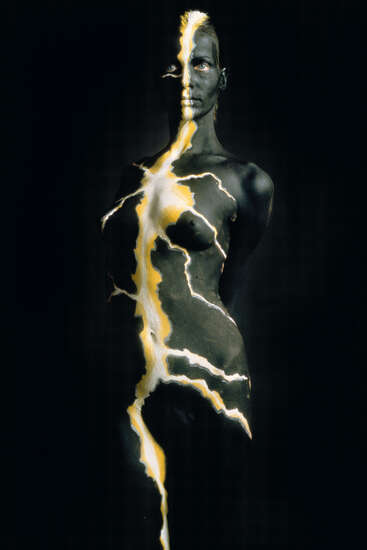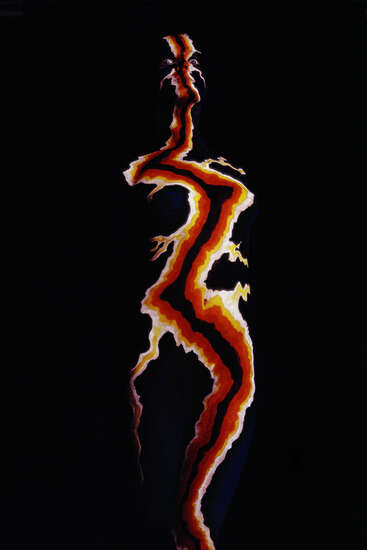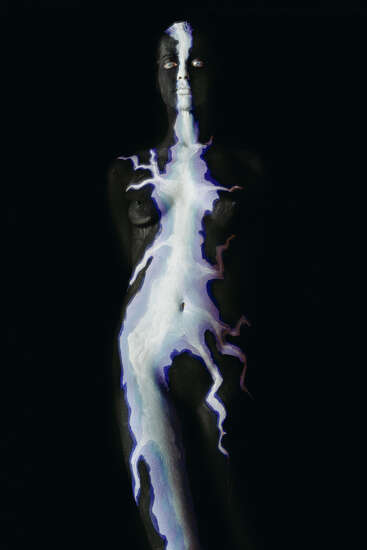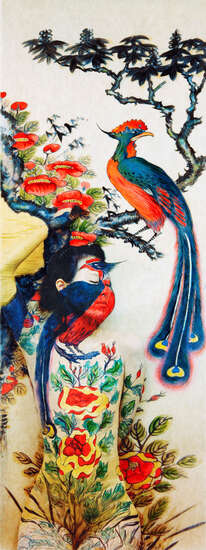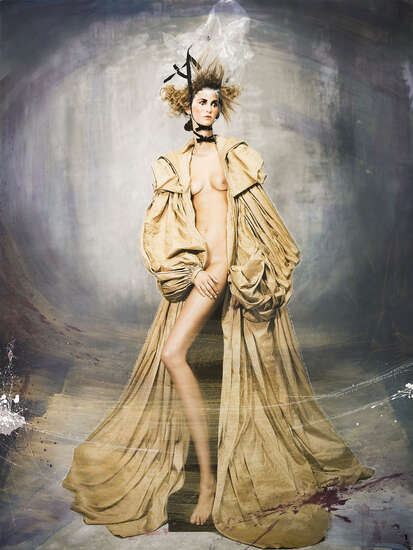READY TO HANG
Out of the box, all LUMAS artworks are ready and easy to hang.
SECURELY PACKAGED
LUMAS works are always packed to the highest standard to make sure it arrives as perfectly as it leaves us.
ARTIST SUPPORTED
Your purchase supports the free and independent work of your favorite artist.
EXTENDED RIGHT OF RETURN
Say it with art. Because of the Christmas season, we have extended your right of return until January 10th!
About 'Veruschka' Vera Lehndorff & Holger TrülzschA UNIVERSE TO ONESELF With his masterpiece Blow-Up (1966) Michelangelo Antonioni cemented Vera Lehndorff’s status as fashion-world icon “Veruschka.” From the time of the legendary photos by Richard Avedon, shortly before the film was made, it was self-evident that the top model would be up to the role. In Antonioni’s movie, swinging London’s fashion photographer David HemmingsBACKGROUND INFORMATION
A UNIVERSE TO ONESELF
With his masterpiece Blow-Up (1966) Michelangelo Antonioni cemented Vera Lehndorff’s status as fashion-world icon “Veruschka.” From the time of the legendary photos by Richard Avedon, shortly before the film was made, it was self-evident that the top model would be up to the role.
In Antonioni’s movie, swinging London’s fashion photographer David Hemmings attempts during a photo shoot to take possession of the woman’s thin, long body, which in its filigree, nearly fragile-seeming proportions always gave off the aura of inapproachability. Solely with the camera’s lens is he able to snatch a moment of this woman’s mystery. Her distinctive elegance seems to elude any worldly estimate. Had Veruschka modeled for a sculptor, then presumably the emerging sculptures would not have looked unlike Giacometti’s figures.
In the photographic series that Vera Lehndorff designed in collaboration with Holger Trülzsch, the aesthetic figure Veruschka refuses to be a projection of beauty’s ideals, yet in these portraits she retains her completely individual aura. Diffused in bolts of energy, in bizarre particle streams, and in psychedelic plays of color that reflect London of the 1960s, Veruschka transcends her body and delves into a world that translates the glamour of an icon into a sensually experiential image.
Even if the forms into which Veruschka transforms cannot be grasped, they always bear the artist’s female touch. Her body constructs an in-between universe, one which plays by its very own set of rules. Here the artist’s aura meets the blackness of an endless nothing. If these photographs could emit sound, it would be the spherical tones of Pink Floyd. Even if body parts have been alienated into unrecognizability, for the viewer they always remain the eye’s reference point to a world that lies outside of human experience. Never will a human be closer to not being from this world, come so close, as in these photographs. A privilege Hemmings could only dream of.
David Gärtner
ON HOLGER TRÜLZSCH
The sculptor, photographer, and video artist Holger Trülzsch undertakes large artistic projects, most often in multimedia, which always hinge on a desire for autonomy and a conceptual approach. This approach is committed to the concrete manifestation of ideas and the materialization of phenomena. His conceptual projects for the most part have to do with architecture and public space. They take up the subject of current political and social relationships and reveal the res publica as the absolute concern of his production.
The artist’s works show an excellent handling and mastery of space – the dynamics and tension between forms become visible. They appear in both static and shifting visions and are portrayed by their intellectual application of the mass, by relevant plays of transparency and reflection. The majority of his installations – whether permanent or temporarily, whether sculpture, painting, or photography – deal with light. Trülzsch’s signature can immediately be recognized in the collaboration with Vera Lehndorff, aka Veruschka, in the series “Signs.” In these photographs, the philosophical, analytical discourse is implemented with critique and irony in the two artists’ unique artistic language.BIOGRAPHY
John David Morley, One for the Road, Sunday Times, London, 19 October 1986
Death of Photography, Village Voice, 30 September 1986
Susan Sontag, Fragments of an Aesthetic of Melancholy, Art in America, September 1986
David Lurie, Persona Non Grata, Arts, December 1985
Sanford Kwinter, Art in America, July 1985
Gary Indiana, Ex-Model Found in Wall, Artforum, May 1985
Grace Glueck, Vera Lehndorff, Holger Trülzsch: Oxydationen, New York Times, 12 April 1985
Imitation and Its Double, Village Voice, 9 April 1985
Edith Newhall, A Body of Work, New York Magazine, 8 April 1985VITA
"Veruschka" Vera Lehndorff 1939 born May 14, 1939 as Vera Lehndorff in Königsberg (now Kaliningrad, Russia) Studied at the Technical School of Design, Hamburg, Germany 1966 Film debut in Michelangelo Antonioni’s Blow-Up 1971 Participation in the Alice Schwarzer-initiated media happening Wir haben abgetrieben! Main role in the Italian feature film Veruschka by Franco Rubartelli 1983 Collaboration on the documentary film Vom Zusehen beim Sterben 1984 Leading role in Ulrike Ottinger’s The Image of Dorian Gray in the Yellow Press 2005 Concept and script for TV documentary Veruschka – (m)ein inszenierter Körper, directed by Paul Morrissey and Bernd Boehm 2007 Cameo appearance in Martin Campbell’s Casino Royale Holger Trülzsch 1939 born in Munich, Germany 1960-1964 studied at Art Academy Munich, Germany 1967 co-founder HSK Munich 1960-1968 studied sociology and psychology in Munich, Germany 1969 founded experimental music group "Popol Vuh" 1970 Trülzsch meets Vera Lehndorff. Parallel to his personal creative work, he begins an artistic cooperation with her: body painting, performance, film shorts, and photography 1973 moved to New York, USA 1983 moved to Paris, France with further stays in the US and Germany 2002 Trülzsch and architect/artist Natascha Bindzus receive the first prize Concours du Val de Marne du Parc Départemental des Cormailles in Ivry-sur-Seine, France

